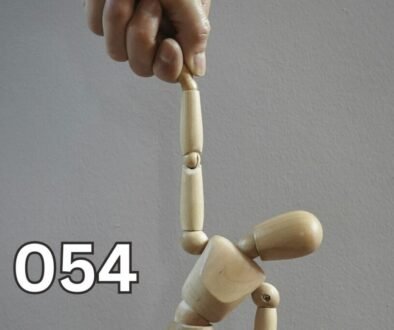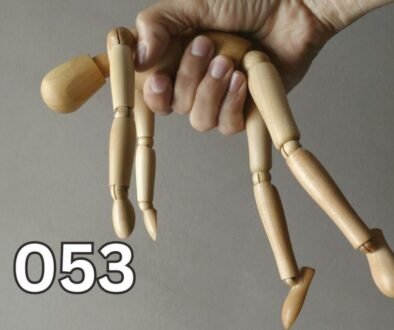FBI Mind-Reading Techniques: 10 Body Language Tricks You Need to Know – Focus on Feet, Not Eyes!

15 APRIL 2025
Introduction: Where Do the Truths Lie?
When trying to gauge honesty, many of us instinctively look to the face and eyes. “Look me in the eye and tell me the truth” is a phrase most of us have heard, if not used. But here’s the twist, because we’re so focused on the face, it’s also where people are most skilled at hiding their emotions. While the saying “the eyes don’t lie” is a charming idea, when it comes to uncovering inner truths, the real storytellers might just be… the feet!
Why Body Language Matters
In this article, we’ll uncover subtle body language movements that often go unnoticed but can reveal a lot about what someone is feeling or thinking. If you’ve ever wondered what a tapping foot or a slight body lean could mean, you’re in the right place.
Inspired by a Body Language Expert
If you’re intrigued by the science of nonverbal communication, you might have come across What Every BODY is Saying by Joe Navarro, a former FBI agent with a wealth of experience in decoding human behaviour. Navarro’s observations show how even the smallest, seemingly insignificant movements can carry important meanings, often without the person realising it.
What You’ll Learn
I’ve compiled some compelling examples and insights from Navarro’s work to help you navigate the subtle yet telling “language” of our bodies. Whether you’re curious about a restless foot, a tilted body, or an unconscious gesture, these cues can offer powerful insights into emotions and intentions.
Ready to decode the unspoken? Let’s dive in!
Why Is Body Language More Honest?
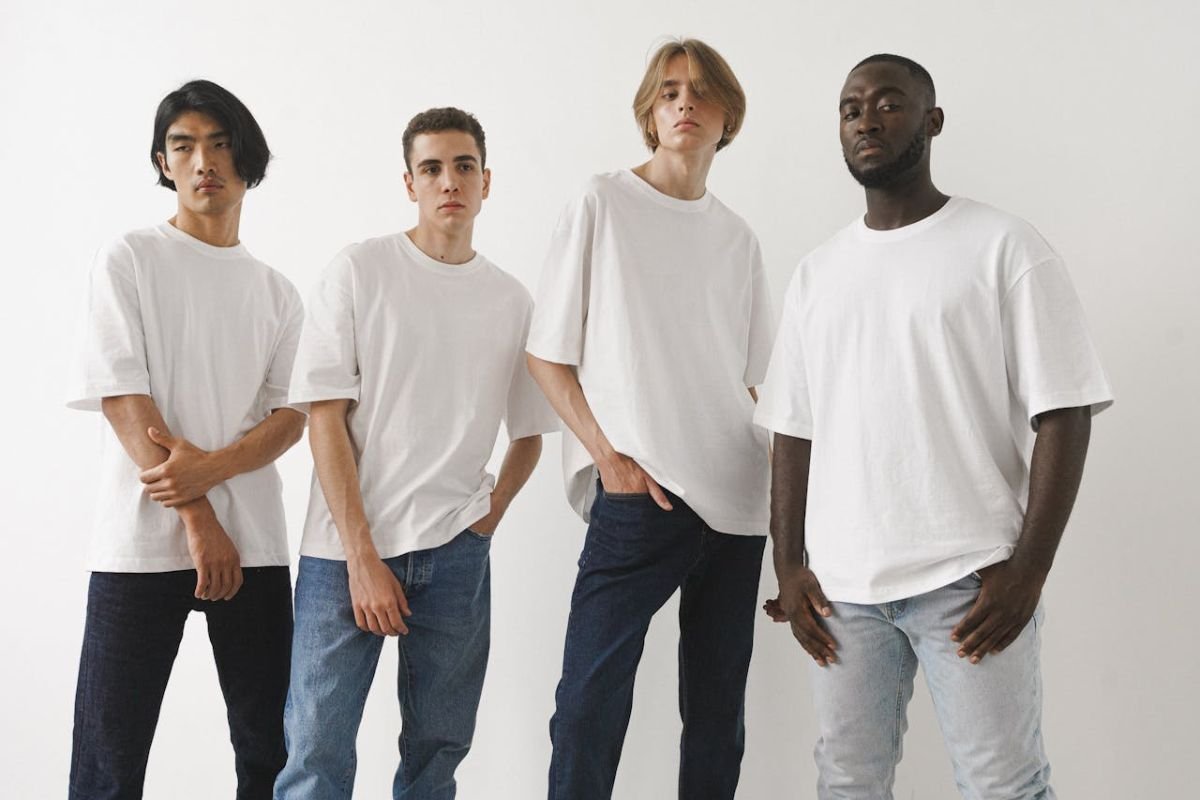
Body language and spoken language are both vital tools for communication, but they operate in very different ways. Spoken language is deliberate, we carefully choose our words to express thoughts or intentions. Body language, however, often works behind the scenes, unconsciously revealing emotions or thoughts we may not even realise we have.
Take this example: someone asks for an object, saying, “Please hand me that.” As they speak, their hand might instinctively reach forward toward the item. This automatic movement often reflects their true desire before their words even register.
Similarly, think about how people gesture while talking on the phone. The listener can’t see these movements, yet they still happen because they’re a natural part of how we express ourselves. Unlike our carefully chosen words, body language skips the filters and edits we apply to speech, making it a more honest representation of our inner state.
The Limbic System: The Brain’s Truth Teller
The reason body language feels so authentic lies in the limbic system, the brain’s “emotional command centre.” This area, which includes the amygdala (handling emotions) and the hippocampus (managing memory), drives our reflexive responses.
When something surprising, exciting, or threatening happens, the limbic system steps in and reacts almost instantly, faster than our conscious mind can catch up. These quick, subconscious movements often reveal emotions that words can’t hide.
For example, during a conversation, leaning forward might signal engagement and curiosity, while crossing arms could indicate discomfort or a desire for protection.
Unlocking the Power of Nonverbal Communication
As Joe Navarro highlights in What Every BODY is Saying, nonverbal cues account for an impressive 60% to 65% of interpersonal communication. That means much of what we “say” to others happens without words.
Understanding body language isn’t just for FBI agents or detectives. It can help you in everyday life, whether you want to strengthen a friendship, connect with a romantic partner, improve family interactions, or navigate workplace dynamics. Paying attention to these unspoken signals can dramatically enhance how you relate to others.
Let’s keep exploring how to decode these fascinating cues!
Body Language Analysis: Start with the Feet
Most people believe the eyes are the key to understanding body language, but here’s a surprising twist: the feet often reveal more. Why? It’s all rooted in survival instincts.
Think about it, thousands of years ago, when humans faced threats, the feet played a crucial role in survival. They were responsible for three key responses: freezing in place, running away, or bracing for a fight. Unlike our faces or hands, which we’ve learned to consciously control to hide emotions, our feet tend to react automatically. They’re the brain’s unfiltered messengers, often giving away feelings before we’re even aware of them.
So, if you’re trying to read someone’s body language, don’t just look at their face, glance at their feet! Are they nervously tapping? Shifting weight from one side to the other? Angling away from the person they’re speaking to? These movements might seem minor, but they can provide powerful clues about what’s really going on beneath the surface.
1. Direction of the Feet
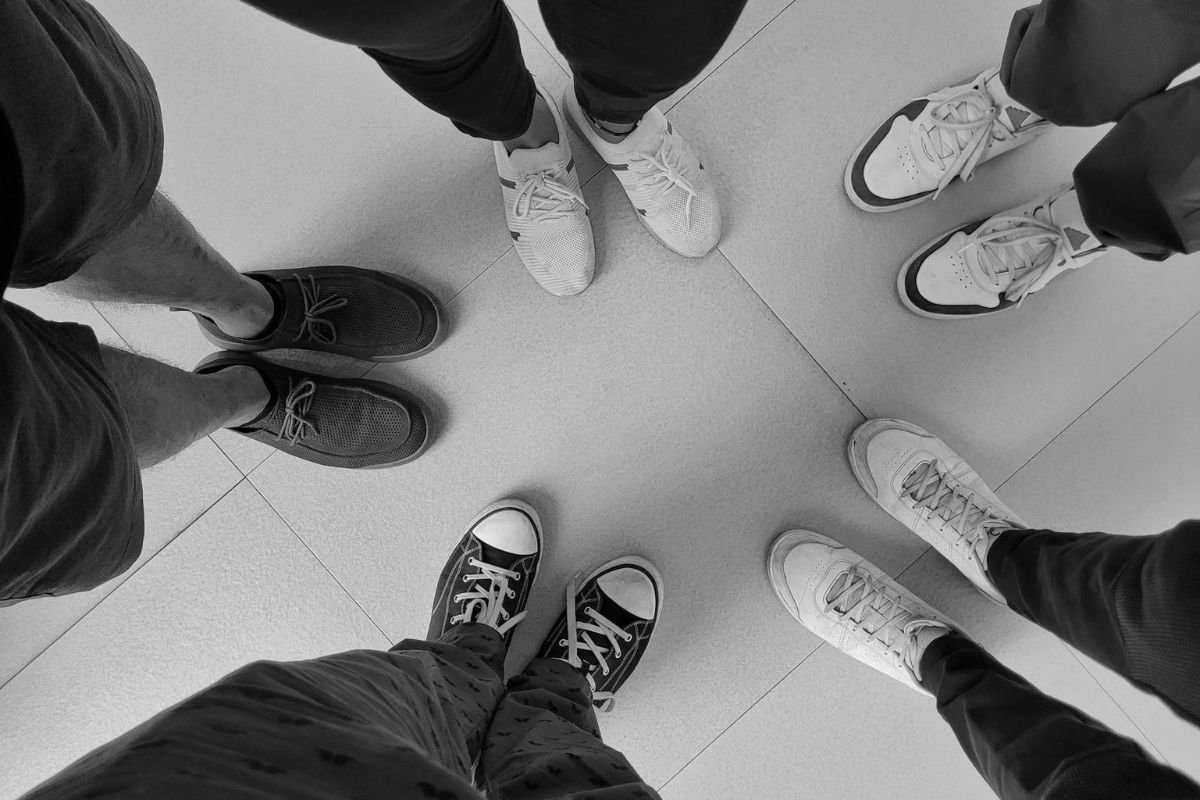
Did you know that your feet can give away your feelings even before you’re aware of them? It’s fascinating! Our feet naturally point toward what, or who, we’re interested in and away from things we’d rather avoid.
For instance, imagine you’re trying to join a group conversation. A quick glance at someone’s feet can tell you if they’re open to including you. If their feet, along with their body, turn toward you, it’s a welcoming gesture. But if only their head or torso shifts while their feet stay fixed elsewhere, their interest might be more polite than genuine.
And then there’s the classic scenario: feet pointed toward the door during a conversation. It’s often a sign the person is ready to leave. But before you jump to conclusions, remember this isn’t always about you. Sometimes, their feet signal urgency, like needing to catch a train or handle another commitment, rather than a lack of interest in the conversation.
By observing the direction of someone’s feet, you can uncover subtle insights about their true feelings. It’s like reading a secret language without needing a decoder!
Feet Don’t Lie: A Story from Joe Navarro
Body language often says what words leave unsaid, and Joe Navarro’s story illustrates this perfectly.
During a five-hour meeting with a client, Navarro noticed an intriguing shift in posture. The client’s feet moved into a position with one foot in front of the other, and their body leaned slightly forward, as if preparing to stand. Navarro trusted his observation and gently asked, “Do you have something you need to take care of?” The client smiled and admitted, “Yes, I need to make a quick phone call. I didn’t want to interrupt.”
What’s fascinating is that the client showed no obvious signs of impatience, no checking the time, no fidgeting. But their feet gave them away, reflecting their unspoken readiness to leave.
Subtle cues like leaning forward, resting hands on knees, or repositioning feet can often indicate someone is preparing to stand up. If you notice these signs, it might be a good moment to wrap things up or check in with the other person to see how they’re feeling.
Body language is incredible, isn’t it? Sometimes, the smallest movements can tell the biggest stories.
2. Foot Movement: A Window to Emotions

Have you ever noticed someone rhythmically tapping their foot, almost like they’re keeping time to a tune only they can hear? That little movement can say so much! It might mean they’re happy or excited, maybe they just got some amazing news or are eagerly waiting for something special. Psychologists sometimes call these gestures self-soothing behaviours or displacement activities. And just like how we might jump for joy when we’re excited, bouncing toes or tapping feet can be a way of releasing energy, whether it’s from anticipation or a touch of nervousness.
But what if their feet aren’t visible? Maybe they’re tucked under a table or hidden from view. Don’t worry, you can still pick up clues. Foot movements often create small ripple effects that show up in other areas, like a slight sway in the shoulders, a shift in their upper body, or even the way their clothing moves.
That said, context is everything. Not every tap or bounce is tied to excitement or joy. Could they be nervous? Sitting awkwardly? Or maybe it’s just a habit? Like any good story, body language only makes sense when you consider the setting and circumstances around it.
Foot Shaking: What Does It Really Mean?
Now let’s talk about foot shaking, it’s one of those things we all notice but often misinterpret. For some people, it’s just a habit. They might shake their legs without even realising it, and it has no connection to their mood or feelings.
However, when the shaking suddenly picks up pace or becomes more pronounced, it could reflect something situational. For instance, foot shaking might indicate impatience, intense focus, or a build-up of energy while they’re deep in thought. Picture a student sitting through a long class. As the session drags on, those bouncing legs often signal their eagerness for the bell to ring.
The trick is not to overthink every movement. Consider the context: Are they engaged in a challenging task? Is the environment naturally making them restless? By observing patterns and piecing together the broader picture, you can get a much better sense of what their body language is really saying.
Reading body language is like solving a puzzle. The more clues you gather, the clearer the picture becomes!
3. Wide-Legged Stance: A Power Play in Body Language
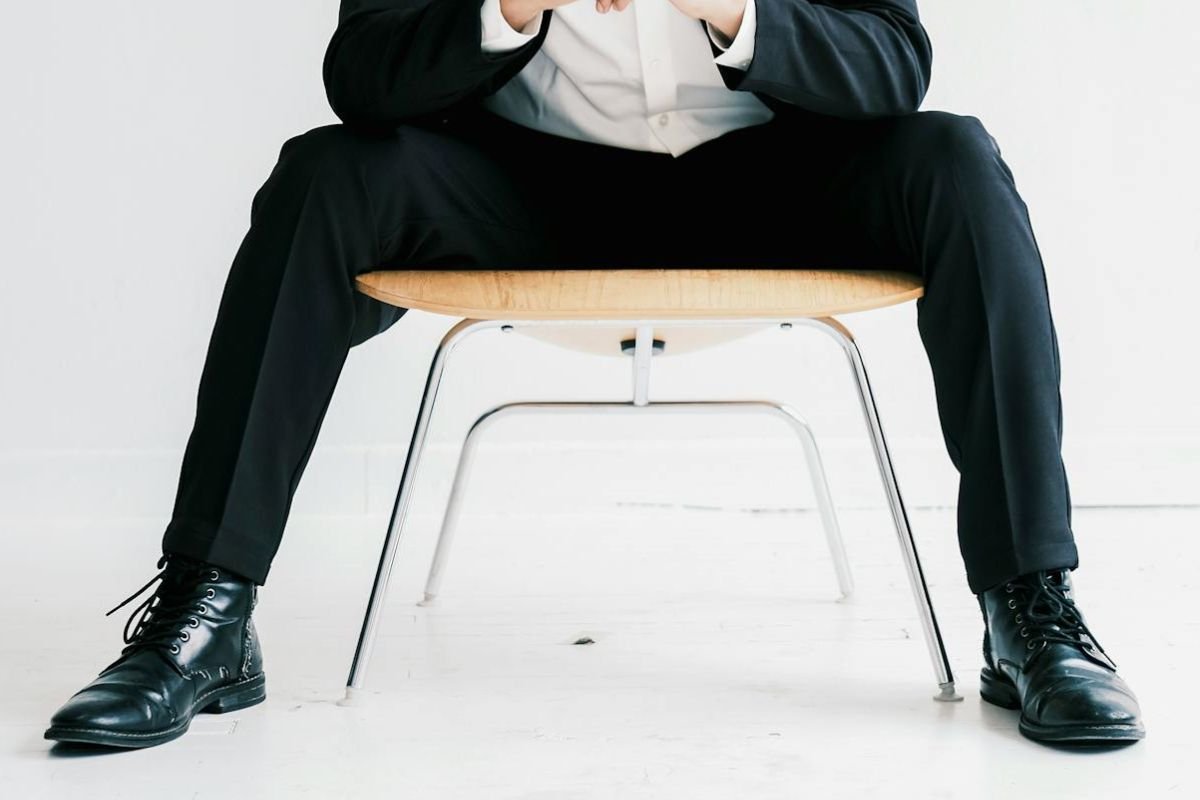
A wide-legged stance isn’t just about maintaining balance, it’s a quiet way of declaring confidence and claiming space. This posture connects back to our primal “fight” response in stressful situations. By standing firmly with legs apart, someone signals strength and a readiness to hold their ground.
Think about leaders you’ve seen on stage, politicians delivering speeches or managers commanding a room. Their wide-set feet seem to say, “I’m in control here.” Often, this posture is subconscious, but its impact is undeniable.
In more personal settings, a sudden change in stance can be revealing. Imagine a casual chat between two people. If one shifts from a closed-leg position to a wider stance, it might signal discomfort or defensiveness. Did the conversation take an unexpected turn? Was a touchy subject brought up?
Joe Navarro, offers a useful tip: bringing your legs closer together during tense discussions can help you appear less confrontational and create a more relaxed atmosphere. Small adjustments in posture can make a big difference in how others perceive and respond to you.
4. Crossed Legs: A Sign of Comfort – or a Clever Mask?
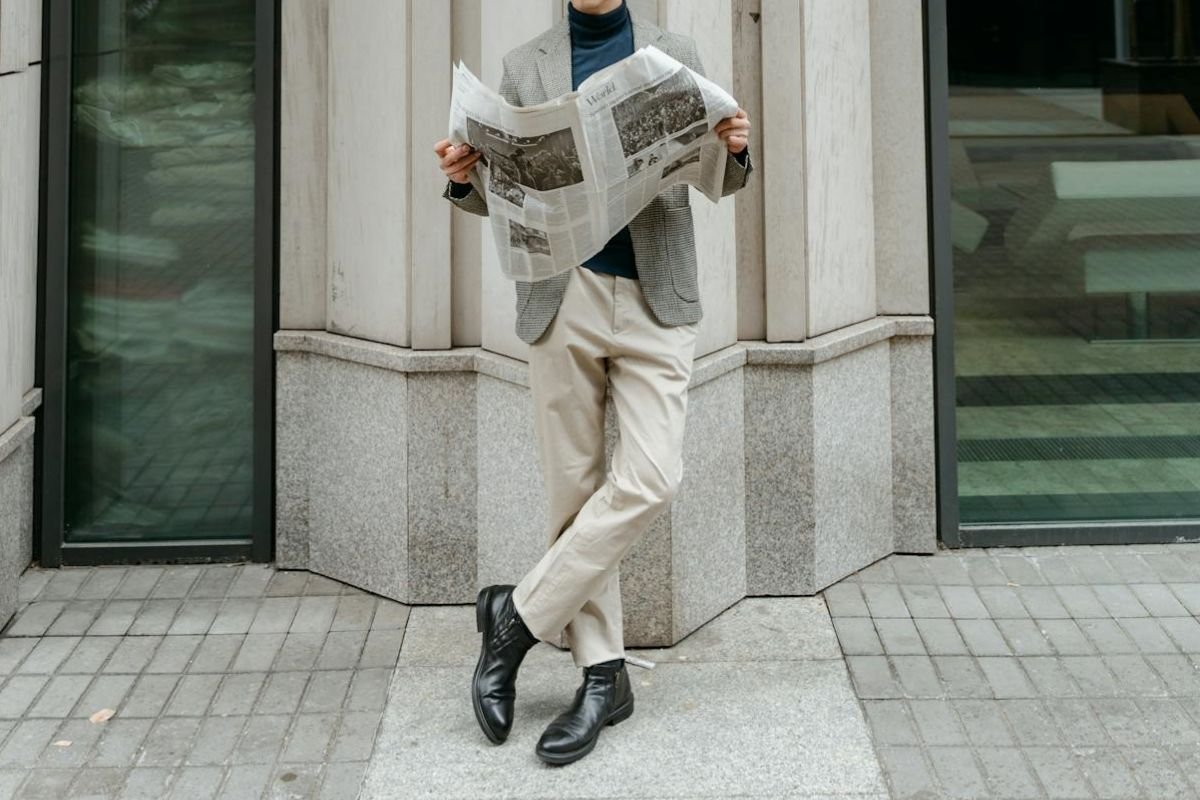
Standing with crossed legs often sends a message of ease and confidence. This posture reduces stability, meaning it’s something we typically adopt only when we feel safe.
Imagine yourself in an empty elevator, leaning casually against the wall with your legs crossed. The moment someone else steps in, though, you might unconsciously shift to a more grounded position. This is your limbic system at work, quietly nudging you to stay alert.
But crossed legs don’t always signal relaxation. Sometimes, it’s a deliberate way to appear calm and in control. As Joe Navarro explains, even individuals trying to hide nervousness, like criminals, might adopt this posture to seem unfazed. That’s why it’s so important to pay attention to other clues too, like subtle facial expressions or changes in breathing.
The takeaway? Crossed legs are often a sign of comfort, but context matters. The environment, the person’s behaviour, and the overall situation combine to tell the full story. As with all body language, the devil’s in the details!
5. The Torso: A Window to Comfort and Vulnerability
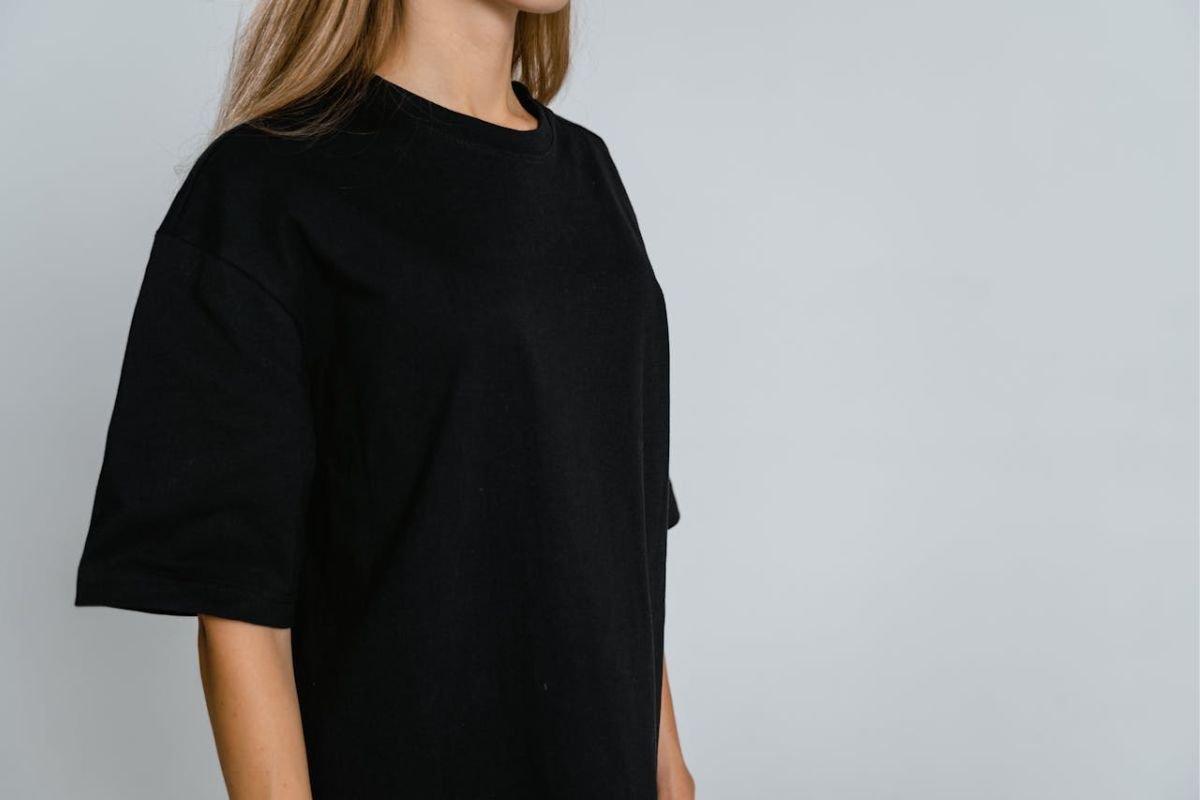
The torso, home to vital organs like the heart and lungs, is one of the body’s most vulnerable areas. Because of this, it often reveals discomfort or unease through subconscious movements. These gestures typically fall into three categories:
- Turning Away: When someone feels threatened or uneasy, they might instinctively turn their torso away or angle slightly to the side. This subtle shift often signals discomfort, even if the person continues to engage with their head and eyes.
- Creating Distance: When turning isn’t an option, people may lean back or subtly shift their torso to create physical distance. It’s the body’s quiet way of saying, “I’m not fully comfortable here.”
- Shielding Behaviors: When creating distance isn’t possible, people often shield their torso by crossing their arms, holding an object close, or using their hands as barriers. These protective actions are unspoken cues of vulnerability.
Paying attention to how someone positions their torso can give you meaningful insights into their state of mind.
Protective Gestures: Subtle Signals of Discomfort
Protective gestures are often small but significant indicators of someone’s emotional state. For example, crossing the arms is a classic sign. Women might place one arm across their chest while the other hand grips the opposite elbow, a posture that combines protection with self-soothing.
At the start of a new school term, female students often clutch their notebooks close to their chest. This gesture signals a need for reassurance in an unfamiliar setting. As they grow more comfortable, they begin carrying their notebooks casually at their side, a subtle but powerful shift that signals increased confidence.
Men, by contrast, tend to favour more discreet gestures. Instead of crossing their arms, they might adjust their cufflinks, fiddle with a watch, or hold onto a nearby object. These actions serve the same purpose, providing a sense of protection while maintaining an air of composure.
However, it’s important not to jump to conclusions. A protective gesture might indicate discomfort, or it could be a response to external factors like cold weather or fatigue. Always consider the context and look for other cues to get the full picture.
By tuning into these small movements, you can better understand the unspoken emotions of those around you, and respond with empathy and awareness.
Signals of Interest: Removing Barriers

When someone is genuinely interested in another person, their body language often shifts to invite closeness and connection. The protective gestures we’ve discussed, turning away, creating distance, or shielding, start to disappear. Instead, you’ll see welcoming behaviours like facing the other person directly, leaning in, and removing physical barriers between them.
Imagine a date where sparks are flying. You might see both people clearing items, like coffee cups, phones, or menus, from between them. This small, subconscious action creates a more direct line of connection. Their torsos turn toward each other, and they lean in slightly, signalling that they’re fully engaged and open to the interaction.
Mirroring: The Subtle Dance of Connection
A sure-fire sign of interest is the “mirroring effect.” This phenomenon occurs when one person unconsciously imitates the actions or expressions of another. If one person leans forward, touches their face, or crosses their legs, the other often follows suit.
Smiles are especially contagious in these moments. A smile from one person almost instinctively triggers a smile from the other. This natural mirroring creates a sense of similarity and understanding, deepening the connection between them.
Beyond Words: Recognising True Interest
To understand someone’s level of interest, pay close attention to their nonverbal cues:
- Clearing Barriers: Are they moving items out of the way to create an open space between you?
- Open Postures: Are they facing you directly, leaning in, or leaving their torso unguarded?
- Mirroring Movements: Are they unconsciously reflecting your gestures or expressions?
These subtle signals are often more revealing than spoken words, offering a window into genuine feelings.
By tuning into these small but meaningful actions, you’ll gain a deeper understanding of the connections you share, and might even strengthen them in the process.
6. Understanding Hand Movements: Signals of Emotions

Our hands often reveal emotions that words might not. Upward movements, like enthusiastic waves or raised arms, are unmistakable signs of joy and openness. In contrast, hands that stay close to the body or hang passively might reflect discomfort or sadness.
In children, hand movements can be particularly revealing. While each child expresses themselves differently, consistently withdrawn or minimal arm gestures may indicate distress or unease.
Observing Hand Movements in Children: A Cautionary Tale
Joe Navarro shared a striking example of how hand movements can reveal hidden emotions. At a swimming pool, he noticed a young girl whose behaviour seemed to shift dramatically depending on her mother’s presence. Usually outgoing, the girl’s hand movements became unusually reserved when her mother was near. Navarro’s observation led him to spot bruises on her arms, and he reported his concerns. Sadly, the girl was later found to be a victim of abuse.
This story underscores the importance of noticing subtle body language changes, especially in vulnerable individuals. While such cues don’t always indicate harm, being observant allows us to offer support when needed.
7. Self-Soothing Gestures: What They Really Mean
When people touch their nose, neck, or hair during a conversation, it’s usually a subconscious effort to self-soothe rather than a sign of deceit. These small gestures help calm nerves by releasing feel-good chemicals like endorphins.
For instance, someone meeting new colleagues might adjust their glasses or rub their neck as they settle into the situation. Similarly, a speaker addressing a crowd might stroke their chin briefly to manage their anxiety.
A Balanced Approach to Nervous Gestures
It’s essential to remember: “Not all nervous people lie, but all liars are nervous.”

Self-soothing gestures are often just signs of unease, not dishonesty.
To interpret them accurately, consider the context:
- Is the topic stressful or emotional?
- Is this behaviour typical for the individual?
By observing patterns and avoiding snap judgments, we can better understand someone’s emotional state without jumping to conclusions.
8. Crossing Arms: A Protective Gesture or Something Else?
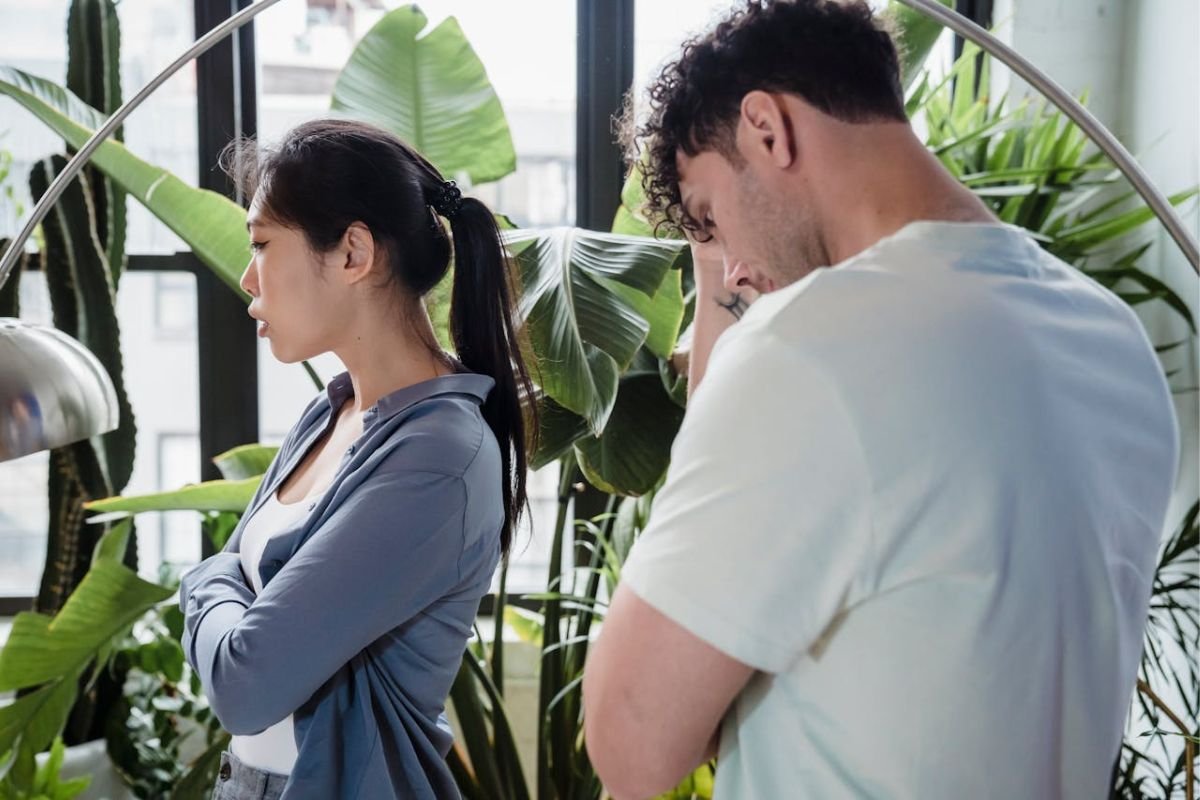
Crossing your arms is one of those gestures that can mean many things. It might be a simple way to keep warm, but it’s often more than that. It can act as a subconscious protective barrier, a sign of nervousness, or even a way to self-soothe.
Joe Navarro explains that this gesture can stem from the “fight or flight” response. When someone feels uneasy, their body prioritises blood flow to the legs and large muscles, preparing for quick action. As a result, less blood reaches the skin, causing a sensation of cold. This physiological shift is why nervous people may appear pale or cold to the touch.
This same principle explains why heated arguments at the dinner table often lead to a loss of appetite. When the body is on high alert, it prioritises blood flow for potential action rather than digestion, putting the stomach on the back burner. So, the next time you see someone crossing their arms, consider the bigger picture. Are they cold, stressed, or reacting to a tense situation? Paying attention to their environment and other body language cues can help you interpret the gesture more accurately.
9. The Subtle Language of Touch
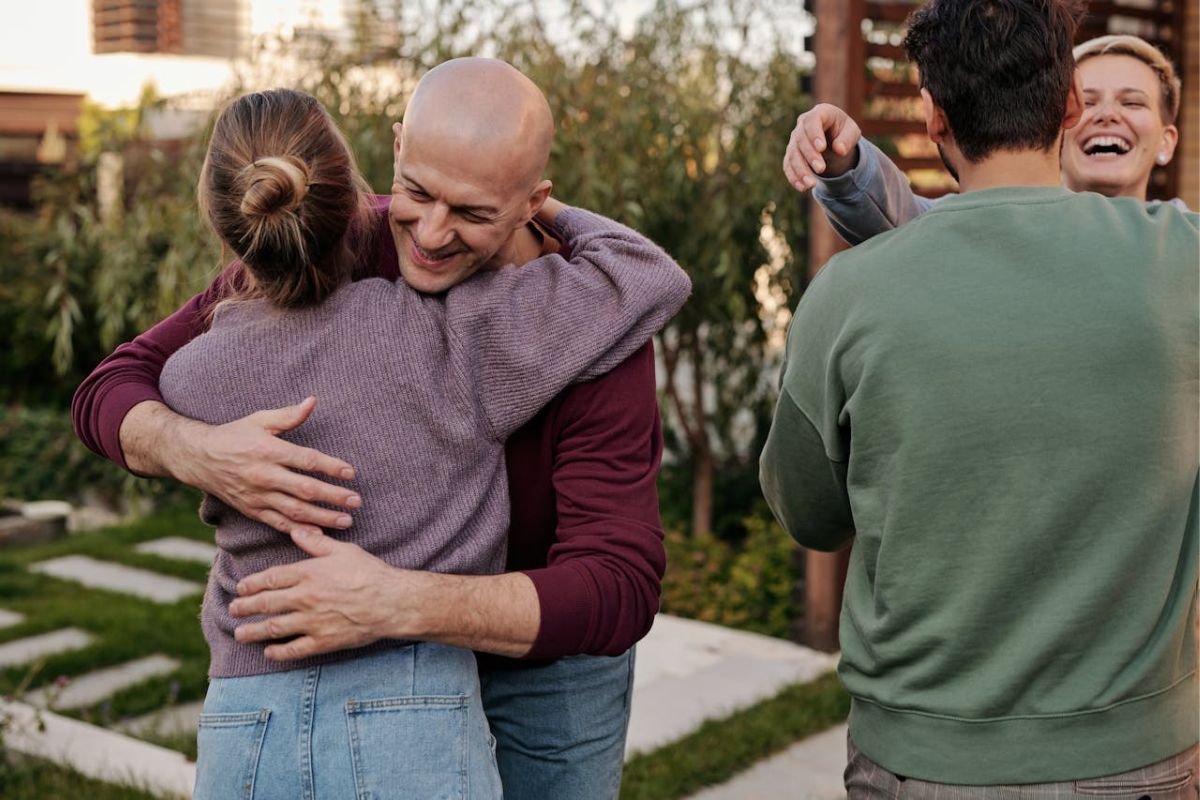
Touch is one of the most revealing forms of nonverbal communication. Whether it’s a handshake, a hug, or a playful nudge, touch can reveal how someone feels about you.
In relationships, increased touch often signals emotional closeness. Couples who hold hands, hug, or engage in playful physical gestures are typically in a positive phase of their relationship. On the other hand, touch tends to decrease during conflicts or moments of emotional distance, reflecting underlying tension.
Even everyday touches, like a friendly pat on the back or a handshake, carry meaning. These polite gestures often convey warmth and openness, though they don’t necessarily indicate deep affection.
Cultural and personal preferences also play a role. Some people are naturally more physically expressive, while others are more reserved. Understanding these nuances helps you interpret touch without making incorrect assumptions.
Practical Tip: If you notice someone avoiding touch or crossing their arms, try to create a comfortable and open environment. A kind gesture, a warm smile, or even removing physical barriers in your interaction can make a big difference in helping them feel at ease.
10. The Subtle Power of Hands in Communication
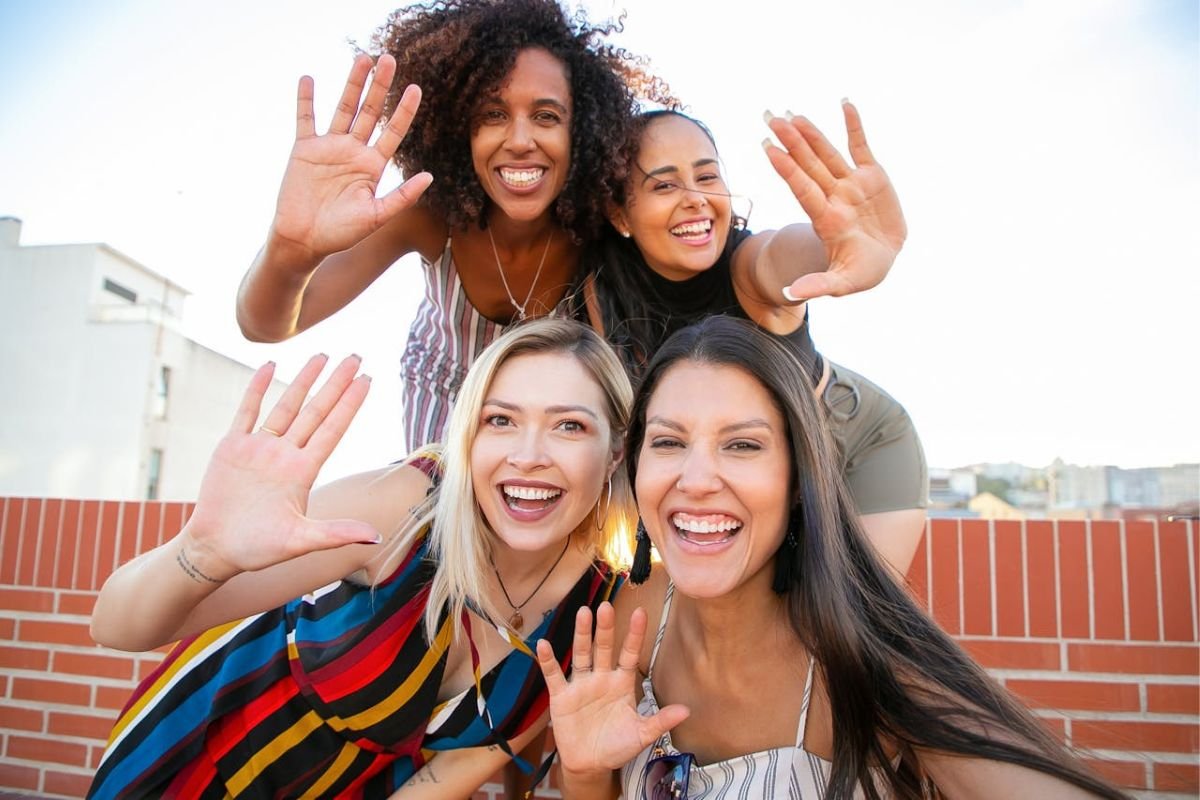
A handshake, a pat on the back, or even a friendly nudge, these are common ways to signal goodwill. But personal boundaries vary, and not everyone feels comfortable with physical touch. So, how can you create connections without stepping over boundaries? The secret lies in showing your hands.
Visible hands play a surprisingly powerful role in communication. Historically, hidden hands were seen as a potential threat, perhaps concealing a weapon, while open, visible hands signalled trust and transparency. This association still resonates today, even if we’re no longer worried about hidden swords!
Imagine you’re on a date. Your partner subtly exposes the inside of their wrist while playing with their hair, a subconscious gesture of comfort or attraction. Or think about a smoker angling their wrist inward toward someone they like. These small actions might seem insignificant, but they speak volumes about how people use their hands to communicate connection.
If you want to create a sense of ease and openness, avoid hiding your hands. Tucking them in your pockets, crossing your arms, or clutching objects in ways that obscure them can unintentionally create barriers. Instead, let your hands rest naturally in plain view. It’s a subtle yet powerful way to build trust and show you’re approachable.
Wrapping Up: Context Is Key

As we conclude, there’s one final takeaway that can transform your understanding of body language: it’s all about context.
Start with baseline behaviour, everyone has their own natural habits and tendencies, the things they do when they’re feeling relaxed. Understanding this makes it easier to spot when something feels off. For example, if a usually calm person suddenly starts fidgeting, they might be feeling anxious. But if someone is naturally a bit restless, their fidgeting is probably just part of who they are.
Then consider environmental context. Behaviour is always influenced by its surroundings. Are crossed arms a defensive gesture or simply a way to stay warm? Is someone avoiding eye contact because they’re nervous or because the room’s lighting is uncomfortable?
Finally, don’t rely on single gestures to draw conclusions. Instead, watch for clusters of behaviours that reinforce one another. For example, crossed arms might mean little on their own, but when paired with leaning away and minimal eye contact, the message becomes clearer.
Remember, body language isn’t about catching lies or playing detective. It’s about building deeper connections, enhancing empathy, and understanding the unspoken. Even experts admit there’s no foolproof way to interpret every gesture perfectly. But with practice and curiosity, you can unlock a richer understanding of the people around you.
Practical Tip: Start small, observe how your own body language changes in different situations, and notice how others respond. The more aware you become, the better equipped you’ll be to navigate the subtleties of communication.


